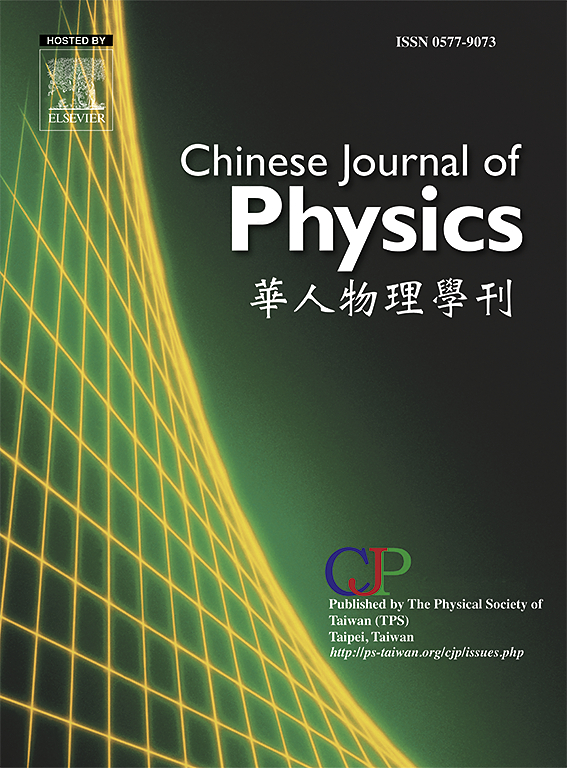Response surface methodology for Darcy–Forchheimer convective flow of Williamson nanofluid: A sensitivity analysis
IF 4.6
2区 物理与天体物理
Q1 PHYSICS, MULTIDISCIPLINARY
引用次数: 0
Abstract
This paper explores the Response Surface Method (RSM) for the Darcy–Forchheimer convective flow of Williamson nanofluid. The convective nanofluid flow is optimized using the Response Surface Methodology, and the effective parameters in the flow are explored through sensitivity analysis. The current study is investigated in two dimensions. Firstly, a mathematical model is developed for the Williamson nanofluid under the influence of Darcy–Forchheimer effects and convection over a stretching sheet. The developed model is simplified by similarity variables, and numerical results are obtained through the bvp4c MATLAB function. Secondly, an empirical relation is developed for heat and mass transport by variance analysis through the RSM approach for dimensionless variables that appeared in the flow model. Sensitivity analysis is performed for heat and mass transfer against the dimensionless variables, namely the inertia coefficient , porosity parameter , and radiation parameter . The findings show that the inertia coefficient, porosity parameter, and radiation parameter are dominant in the flow model for heat and mass transport. Furthermore, the radiation parameter is more prominent than the inertia and porosity parameters for mass transport, while the opposite behavior is observed for heat transport.

Williamson纳米流体Darcy-Forchheimer对流的响应面方法:敏感性分析
研究了Williamson纳米流体Darcy-Forchheimer对流流动的响应面法(RSM)。采用响应面法对对流纳米流体流动进行了优化,并通过灵敏度分析探索了对流纳米流体流动中的有效参数。目前的研究是在两个维度上进行的。首先,建立了受Darcy-Forchheimer效应和拉伸薄片上对流影响的Williamson纳米流体的数学模型。利用相似变量对所建立的模型进行简化,并通过bvp4c MATLAB函数得到数值结果。其次,通过RSM方法对流动模型中出现的无因次变量进行方差分析,建立了热量和质量传递的经验关系。对惯性系数(0.1≤Fr≤3.5)、孔隙度参数(1≤β≤3)、辐射参数(1≤Rd≤4)等无量纲变量进行了传热传质敏感性分析。研究结果表明,惯性系数、孔隙率参数和辐射参数在热质输运流动模型中占主导地位。此外,在质量输运中,辐射参数比惯性和孔隙率参数更为突出,而在热输运中则相反。
本文章由计算机程序翻译,如有差异,请以英文原文为准。
求助全文
约1分钟内获得全文
求助全文
来源期刊

Chinese Journal of Physics
物理-物理:综合
CiteScore
8.50
自引率
10.00%
发文量
361
审稿时长
44 days
期刊介绍:
The Chinese Journal of Physics publishes important advances in various branches in physics, including statistical and biophysical physics, condensed matter physics, atomic/molecular physics, optics, particle physics and nuclear physics.
The editors welcome manuscripts on:
-General Physics: Statistical and Quantum Mechanics, etc.-
Gravitation and Astrophysics-
Elementary Particles and Fields-
Nuclear Physics-
Atomic, Molecular, and Optical Physics-
Quantum Information and Quantum Computation-
Fluid Dynamics, Nonlinear Dynamics, Chaos, and Complex Networks-
Plasma and Beam Physics-
Condensed Matter: Structure, etc.-
Condensed Matter: Electronic Properties, etc.-
Polymer, Soft Matter, Biological, and Interdisciplinary Physics.
CJP publishes regular research papers, feature articles and review papers.
 求助内容:
求助内容: 应助结果提醒方式:
应助结果提醒方式:


